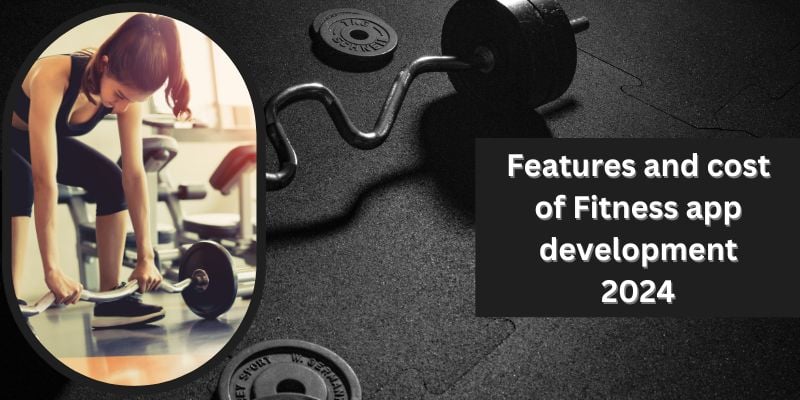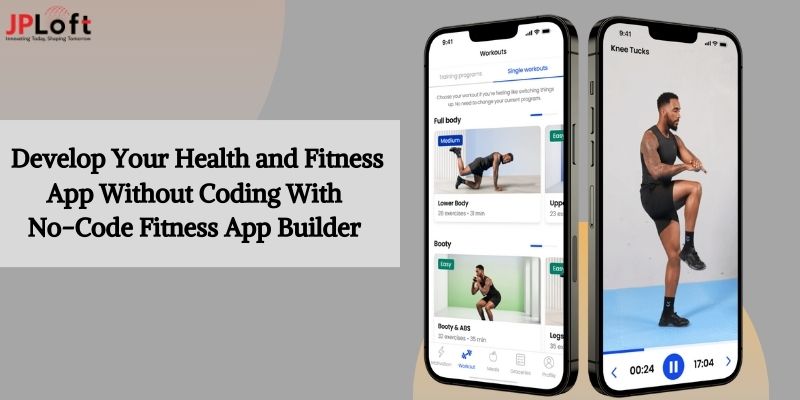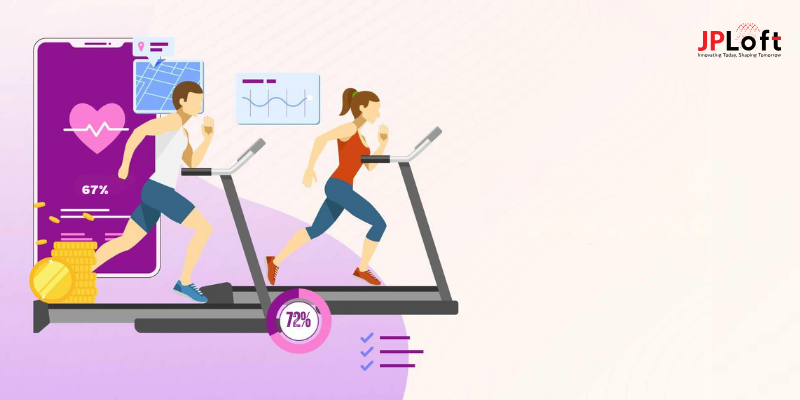Today, time is at a premium, and individuals seeking effective and convenient ways to achieve their fitness goals have prioritized finding the best fitness app as one of their main objectives.Digital fitness app solutions abound, each promising to be the one solution that meets one's exercise and wellness needs. However, with such an overwhelming array of possibilities at hand, one must embark upon an investigation to locate their perfect match according to personal goals and preferences.The Ultimate Guide to Finding the best Fitness App for Your Goals provides an in-depth roadmap to navigate today's ever-expanding fitness app ecosystem. This guide aims to demystify this process so you can make informed choices that align with your health and fitness aspirations. We will discuss critical factors like fitness objectives, personal preferences, available features, and budget constraints when making this decision.Strength training enthusiasts looking for muscle gains, cardio enthusiasts seeking increased endurance, yoga practitioners looking for their Zen, and those needing a combination of all these aspects - this guide caters to everyone on their fitness journey. We will examine various fitness app solutions available so you can confidently make an informed decision when selecting one.
Tips to Find the Best Fitness App for Your Goals
As part of our quest to help guide you through this cluttered landscape, we will offer some suggestions on selecting an effective fitness app suited to your personal goals, as well as discuss mobile app development services that specialize in creating top-tier fitness applications.
Establish Your Fitness Goals
The first step towards selecting an app tailored to your fitness goals is setting objectives: do you wish to shed a few pounds, gain muscle mass, or remain physically active? Different fitness apps offer targeted support geared at specific goals - by clarifying them now, you will narrow down all available solutions effectively!
Evaluate Your Current Fitness Level
Your current fitness level should also play a crucial role when selecting an app to match. Some are tailored for beginners, while others provide more advanced users. Choosing an app that complements your level will reduce injury or frustration, and mobile app development services can play an integral part in creating apps with adaptive features that respond to users' fitness levels.
Research User Reviews and Ratings
Once you understand your fitness goals and levels, begin your research by reviewing user reviews for various fitness apps. Feedback from other users may provide invaluable insight into an app's effectiveness, ease of use, and overall quality; pay particular attention to comments from people with goals similar to yours and fitness levels identical to theirs.
Uncover App Features
Each fitness app has different features and capabilities that may work toward meeting your fitness goals. Take the time to explore these features to ensure they will support them; some popular ones include workout routines, diet tracking, progress tracking, or integration with wearable devices like fitness trackers. Mobile app development services continually seek ways to optimize these features for seamless user experiences.
User-Friendly Interface
User-friendliness of fitness apps is of utmost importance since a complicated or disorienting layout could prevent regular usage. Look for one with an intuitive design to track progress easily. Mobile app development services strive to develop visually attractive yet practical user interfaces.
Compatibility with Your Devices
Make sure the fitness app you choose is compatible with both iOS and Android operating systems for optimal use on mobile devices; some may offer web versions that you can access from a computer. Compatibility ensures you can easily access all your fitness data on every device used regularly by accessing its main user-facing version - iOS, Android, or a web version such as HealthKit on Facebook!
Free and Paid Apps
Fitness apps come in both free and paid versions. Both types offer useful features; paid apps may provide more comprehensive or tailored content based on your budget and desired features. When making this decision, consider both aspects to find which fits best with your fitness goals - budget constraints may play a part!
Customized Workout Routines and Plans
Fitness apps that offer personalized workout routines and meal plans tailored specifically to you can make working out easier and ultimately accomplishing goals faster than ever! Find apps that take into account age, weight, height, as well as any relevant data such as age or size to develop customized plans - mobile app development services offer this customization through algorithms or data services to deliver these personalized plans.
Track Record and ReliabilityS
elect a fitness app with an excellent track record and history of reliability, such as being regularly updated by its developers or featuring fewer bugs that cause user irritation - both qualities will ensure a more effortless user experience overall.
Community and Support
Many fitness apps feature social elements, enabling you to form connections with those with similar fitness goals and provide motivation and support on your fitness journey. When selecting apps with this social element, look for forums or challenges where users can interact, as these will increase motivation.
Nutrition and Diet Tracking
Diet is an integral component of reaching fitness goals. If diet is an essential component, ensure your fitness app includes features for tracking nutrition and diet as part of its capabilities. Some apps even offer meal planning or calorie tracking features - this way, your fitness journey will stay cohesive from its origins! If it plays an integral part, be sure that any app chosen accommodates this aspect fully.
Connected Wearable Devices
If you use a fitness tracker or smartwatch, look for apps that integrate smoothly with it - this can streamline the process of tracking workouts and tracking progress more effectively. Mobile app development services often specialize in creating these integrations to enhance user experiences.
Data Privacy and Security
Because your health and fitness data can be sensitive, it's vitally important that any app prioritizes data privacy and security. Be sure to read their privacy policy to understand how your information will be utilized or protected - reliable fitness apps should have strong safeguards as standard practice.
Trial Periods
Many paid fitness apps offer trial periods so you can evaluate whether their features meet your needs before subscribing. Take advantage of them so you can determine if the app meets all of your expectations and needs.
Set Realistic Expectations
Finally, it is crucial that users set reasonable expectations when setting out expectations about fitness apps and what they can accomplish for them. While fitness apps may provide valuable tools, they do not promise instantaneous results, and adherence to an app's guidance will ultimately decide your success or otherwise.
Factors to Consider When Choosing the Best Fitness App
These factors will assist in finding your ideal fitness companion on an Android or iOS device.
Your Fitness Goals
The initial and most essential factor when selecting a fitness app should be your goals. Different applications cater to specific fitness goals like weight loss, muscle building, cardio fitness, or yoga; you need to identify these objectives before making any decisions; for instance, if cardio workouts are your thing, then apps such as Strava and Nike Run Club might be ideal.Apps such as MyFitnessPal and StrongLifts 5x5 may be ideal for anyone aiming to build muscle mass. By setting goals matching their fitness journey, identifying apps may become less daunting and help streamline decisions further.
App Features
Fitness apps come in all shapes and sizes; as you evaluate which features matter to you most when searching for fitness apps, make a note of which ones matter the most to you - these may include workout tracking, meal planning, social sharing/support features/community support options as well as wearable device integration features that could provide tools needed to meet your fitness goals successfully.For instance, to keep track of your fitness progress and set goals more effectively, fitness apps with workout logs and progress monitoring features may be essential. When seeking help, meal planning apps with nutrition databases and tracking features could provide guidance - ideal if meal preparation requires support!
User Interface and Experience
For an enjoyable fitness app experience, a user-friendly interface is critical. Make your fitness journey convenient and pleasurable by designing it user-friendly from start to finish with well-organized graphics that facilitate navigation and an intuitive layout that's user-friendly - it could make or break an app's success! A clean interface will add convenience while offering access to crucial features quickly - it may make life healthier overall!
Customizability
Aim for an app that lets you personalize your workouts, goals, and preferences; finding one with customizable settings could keep you engaged while helping you stay on the path toward reaching fitness. Customized options should allow for customizations like setting intensity levels for workouts and selecting exercises aligning with fitness goals.
Community and Social Features
Fitness enthusiasts often benefit from joining an encouraging fitness community. Many fitness apps now include features that facilitate this type of engagement, such as connecting with friends, sharing progress reports, and participating in challenges. When setting fitness goals and changing lifestyle habits, engaging with such communities may offer extra support and accountability - think about joining one!
Integration with Wearable Devices
If you use fitness trackers and smartwatches, an ideal app should integrate seamlessly, ensuring accurate recording and sync-ing of workout data and health details. Before selecting one, confirm whether both devices support the features that provide an integrated experience.
Data Privacy and Security
Your health and fitness data is sensitive, making it essential to review an app's privacy and security measures carefully. Read its privacy policy to understand how data are collected, stored, shared, or protected within it - this way, you're assured your details stay protected! Likewise, ensure it follows industry best practices for data protection to make sure your privacy remains intact and remains safe!
Cost and Subscription Model
Many fitness apps provide free and premium subscription options to meet the needs of their users best. Consider your budget when making this investment decision - some free apps provide basic capabilities while paid subscriptions often add advanced ones; it is worth evaluating whether a premium subscription warrants its cost when considering all it offers in return.
Read Customer Reviews and Ratings
Before making your choice, always read user reviews from app stores such as Google Play Store and Apple App Store to gain valuable insight into other user's real-world experiences with an application. Please pay special attention to the pros and cons mentioned by reviewers so you can better comprehend its strengths and weaknesses.
Updates and Support
Over time, fitness apps may experience variations in quality and reliability; for this reason, they should receive regular updates to address bugs, add features, and adapt to new technology. It's wise to look closely at their update history and customer support to see whether an active team of developers remains engaged to ensure their app keeps evolving with user needs and meets them effectively.
Offline Access
Evaluate whether offline access is essential. Some fitness apps require constant internet connectivity for optimal usage; this could become problematic when working out in areas with poor connectivity or preferring to use something other than mobile data plans. Search for apps offering offline functionality, allowing easy access to workouts and data when necessary.
Compatibility with Android and iOS
Finally, ensure the fitness app you select is compatible with your device's operating system, whether Android or iOS; many fitness apps specialize in one platform or both, making sure that they function seamlessly when used on any platform you prefer. Compatibility ensures a great user experience across devices!
Factors Affecting the Cost of Making a Fitness App
This article will outline these factors to provide a complete picture of what goes into estimating costs associated with developing fitness apps.
App Features
Your fitness app features are key factors when considering its development cost. Simple apps with features such as workout tracking, calorie tracking, and goal setting may cost less; however, adding advanced elements like personalized workout plans, real-time coaching, or integration with wearable devices will significantly raise the development bill.
Platform Selection
Cost to make an app will depend heavily upon whether or not it targets iOS and Android platforms exclusively; in general, developing for both platforms usually incurs more extraordinary expenses, yet expanding user reach increases revenue over time.
Design and User Interface
A visually engaging and user-friendly design are vital ingredients of a fitness app's success, with costs dependent upon the complexity and uniqueness of interface design; custom animation designs will add additional costs.
Development Team
Your development team's size and experience play an instrumental role in the costs associated with developing a fitness app. Hiring experienced developers, designers, and quality assurance specialists often results in higher initial expenses, but their services could produce more polished apps with additional features and functionality than those made without.
Backend Infrastructure
A robust backend infrastructure is critical to securely storing user data, organizing workouts, and delivering content. Unfortunately, building and managing such an environment is usually costly--especially if supporting an extensive user base is involved.
Third-Party Integrations
When planning to integrate your fitness app with external services such as fitness trackers, nutrition databases, or social media platforms, additional resources must be allotted for developing and maintaining these third-party integrations - which could add further costs.
Data Security and Compliance
Fitness apps often collect sensitive user data, such as personal and health-related data, that must remain private and compliant with data protection regulations. Implementing robust security measures and adhering to compliance standards may require additional investment during development, so safeguarding this sensitive data must remain top of mind for fitness app creators.
Testing and Quality Assurance
Testing is critical to discovering bugs quickly, providing users with an enjoyable user experience, and meeting development costs. Quality assurance testing may take considerable time and require a dedicated team to pass each test cycle, further increasing development costs successfully.
Ongoing Maintenance and Updates
A fitness app doesn't end after its initial release - you will require resources for ongoing maintenance, updates, bug fixes, and regular market checks to stay competitive and profitable in its field.
Market and User Acquisition
Once your fitness app is built, its success relies heavily on marketing and user acquisition efforts that attract and keep users. Your expenses for marketing could differ considerably depending on which channels and strategies are chosen for marketing your app.
You're App Monetization Strategy
Your choice of monetization can affect app development costs. For instance, offering free apps with in-app purchases, advertising revenue models, or subscription-based models requires custom development that supports these revenue sources - which in turn affects overall development costs.
Location of Development Team
Your geographical development team location has an enormous effect on costs. Hiring developers located in regions with lower living expenses may reduce development expenses; however, hiring them there also presents communication and project management issues that must be overcome for your development project to run successfully.
Conclusion
Searching for an app that best compliments your health and wellness goals requires thoughtful evaluation and deliberation. This comprehensive guide highlights vital considerations when searching for the ideal fitness app, highlighting personal objectives, features, usability, and long-term commitment as critical considerations when making this important decision.With mobile app development companies proliferating rapidly, fitness apps have skyrocketed in number. Their exponential rise has brought an abundance of diverse, innovative, and customized solutions, making it essential that users navigate them effectively to find solutions tailored specifically to them.From weight-loss apps to muscle-building programs - whatever it may be that suits your goals best; there's sure to be one designed specifically to your requirements!Understanding your fitness goals, exploring various apps' features and functionalities, and assessing user-friendliness will enable you to narrow your choices and ultimately find the most fitting app. Committing yourself and staying the course will assist in realizing your objectives more successfully.As mobile app development advances, fitness apps will likely continue to provide enhanced and user-centric experiences. Staying abreast of developments within this space will keep you on the cutting edge of fitness technology while making sure that any chosen app reflects your goals appropriately.
FAQs
1. What Is the Best Fitness App?
A "best fitness App" refers to any top-rated fitness application that aids users in meeting their health and fitness goals. Individual preferences, needs, and dreams often dictate which app may work best, so to identify one suitable to yourself, consider factors like fitness level, workout preferences, and desired features when making this decision.
2. Which Fitness App Will Suit Me Best?
Select an app tailored to your fitness goals and preferences, such as weight loss, muscle gain, or improving cardiovascular health. Consider what workout styles work for you best, such as home workouts, gym routines, or outdoor activities, before reading reviews of various apps until you find one that best meets both.
3. What Features Should I Look for When Selecting the Ideal Fitness Apps?
Some key features to look out for in an ideal fitness app include workout tracking, customizable workout plans, video tutorials, progress monitoring, nutritional guidance, and a user-friendly interface. Consider having community or social features for added motivation and support.
4. Are there any free fitness apps?
Many fitness apps now provide basic fitness apps with essential features and workout routines as free options, such as MyFitnessPal, Fitbod, and Nike Training Club, which all give this feature for free versions for beginners - these may serve well, but some premium features might require a subscription or one-time purchase to unlock them fully.
5. What Are Some Highly Rated Fitness Apps?
MyFitnessPal, Fitbit Coach, and 7 Minute Workout have long been considered top fitness apps. Each individual's goals and preferences differ, so the right fitness app for them may








